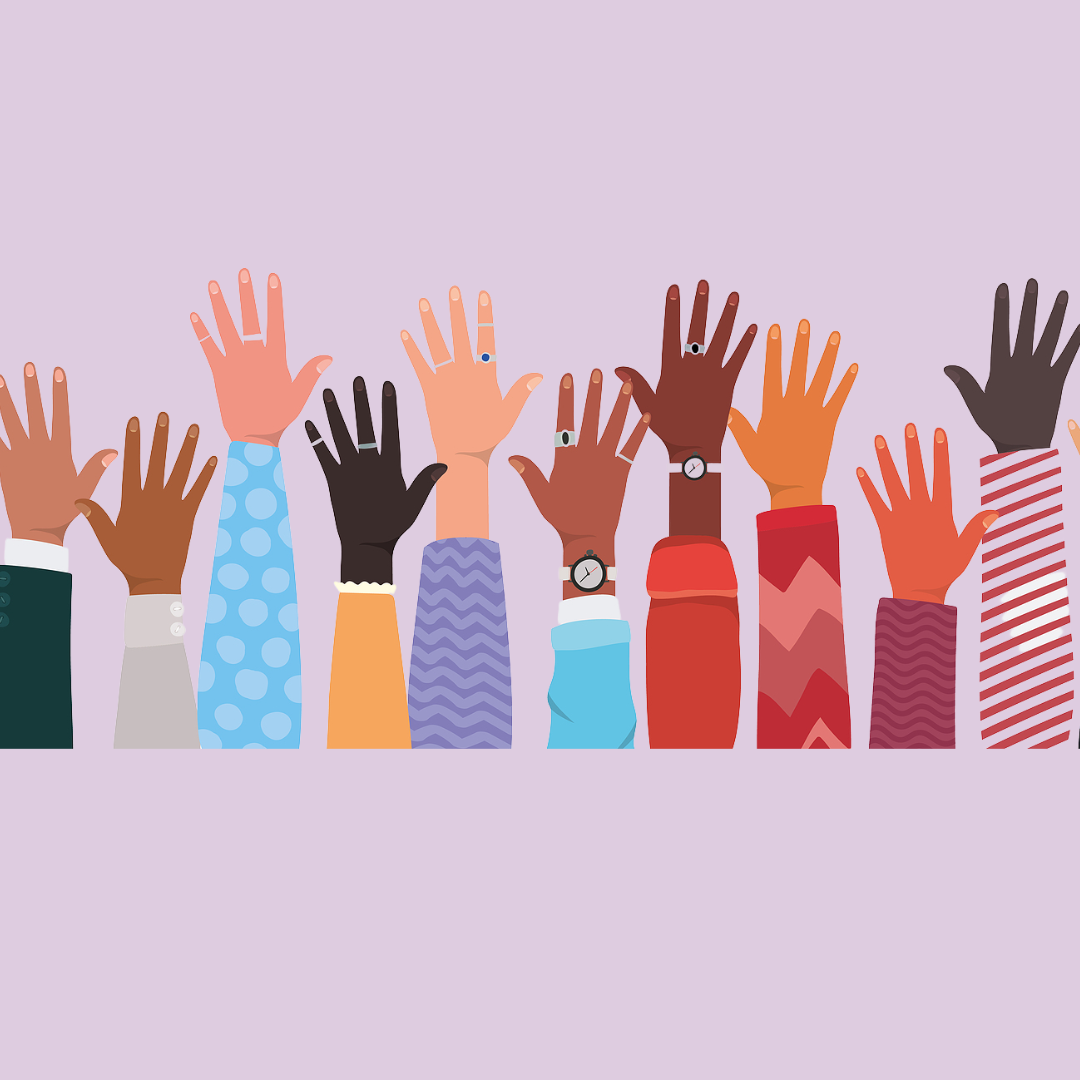Introduction
Racial and ethnic health inequities have been identified among public health professionals across disciplines as a critical public health issue. As a result of the cross-cutting impact of facing centuries of structural racism and system oppression, communities of color in the United States are often disproportionately impacted with disease burden and mortality in comparison to their White counterparts. While researchers, providers, policymakers, and public health practitioners have been working closely to dismantle the pathway between structural racism and health disparities, many of these justice workings fail to put young adults at the forefront. For example, many non-profit organizations with health equity initiatives focus closely on age groups that face the onset of chronic illness, such as Cardiovascular Disease, Cancer and Diabetes—usually these are, at youngest, midlife adults, ages 40+. While the critical work of these organizations reaches populations hardest hit, younger populations are left out of the equation. What if we initiated more research and initiatives that placed emerging adults (ages 18-30) at the forefront? Perhaps if we interrupted health disparities long before the onset of chronic illness, we could vastly improve the outlook for health for marginalized populations in the future. In this paper, we will explore this idea using both existing literature and perspectives from leaders who are experts in this work, including Omari Richins, CEO and Founder of Public Health Millennial and Brianna Baker, Co-Founder of Black in Mental Health.
Young People Are Strong, But Not Immune
We typically see the most significant declines in physical health status as we age–the onset for hypertension is loosely defined around 55 years old (Suvilla et al, 2020); the median age for cancer of all types is around 66 years old (NCI, 2021) and the average age for diabetes diagnosis is around 50 years old (Wang, Shah and Carnethon, 2021). Thus, many programs that address these illnesses from both a management and prevention lens tend to be geared toward adults at or approaching mid-life. For example, the American Heart Association prevention guidelines and risk calculator (for) hypertension are specifically designed for adults over the age of 40 (American Heart Association, 2018). However, recent data has shown that the risk for such diseases may need to be addressed sooner in the life course, especially for people of color. The onset of hypertension is concerningly young among African Americans, with a third of African Americans ages 18-44 reporting a hypertension diagnosis (Suvilla et al, 2020; Parcha et al, 2020). Additionally, studies have shown that African American youth have a higher prevalence of cardiovascular disease risk factors leading to an accelerated rate of disease progression when compared to other groups (Bruce et al, 2017). Young folks are strong, but evidently, not “invincible” or immune to weathering. With the growing risk of younger adults of color being diagnosed with a chronic physical illness, it’s more important than ever to unpack the pathway that may be contributing to enhanced risk factors in these populations before it’s too late.
Mental Health A Major Crisis For Younger Folks
Mental health—a term that in the past decade has become a staple in our understanding of our health, especially for adolescents and young adults, is a major crisis. Nearly 1 in 3 (30.6%) US adults between the ages of 18 and 25 report having some sort of mental illness (National Institute of Mental Health, 2020). Social media and screen fatigue, body image struggles, peer pressure and bullying, a grave current socio-political landscape, relationship drama and childhood trauma are just the tip of the iceberg of factors that have a chokehold on the mental health and wellbeing of young people. Knowing that intense stress is a key exposure that may lead to adverse physical health outcomes makes these factors of great importance in continued efforts to improve health in the future. The racial awakening in the wake of the killing of George Floyd partnered by the COVID-19 pandemic is also evidence that the mental health of young people of color should be especially considered in this pathway. Racial trauma and the consequences of health disparities were deeply revealed over the past few years, and many young people of color may be grappling with their first understandings of the impacts of racism on their world. Brianna Baker, a Counseling Psychology PhD student at Columbia University and Co-Founder of Black in Mental Health provided incredible insight on how these inequities begin to manifest early on. She shares, “…there’s literature that shares that children realize that they’re Black and the implications of being Black in this country and what that means. As early as three to four years old, knowing that you’re different and essentially having knowledge that you are less than your White peers or these White faces that you see in the world, just the toll that takes on mental health, as far as believing what you’re worth and what you can do. It’s like there is literally a weight that is placed upon you as a toddler that you can’t do certain things, or that you will never be able to reach the heights of these other people or reach this freedom that other lighter faces may have. People of color feel that at a young age but may not be able to express it or verbalize it–not having the space to express these feelings.” Not only is mental health a massive burden on young adults, but the specific burdens racial stressors place on young adults of color in our current state of the world is immense, and are forming a frightening pathway to sustained health inequities in the future.
Looking Forward: Improving Health Equity for the Next Generation
So, what’s next? What are some measures that public health professionals can specifically implement to improve the health outlook for young adults of color? For starters, more research activity that aims to address the pathway between mental health and physical health outcomes in young adults specifically should be initiated by institutions. The better we understand the specific factors and needs of younger adults, especially those of marginalized backgrounds, the better subsequent interventions can be tailored. That said, interventions by networks and non-profits should also be made widely accessible to younger adults of diverse backgrounds. Omari Richins from The Public Health Millennial supports this, sharing that “It is very important to create spaces where people are able to learn about health equity, racism, anti-racism, white supremacy and having spaces to talk about it as well…it’s a necessary conversation–hard conversation, but necessary to drive this work forward.” In addition to the digital resources that Public Health Millennial provides, organizations such as the My Sister’s Keeper Program at Black Women’s Health Imperative are paving the way in this work, as they recently launched their Heart Health Program, which is designed to improve the cardiovascular health of Black women ages 18-30 (BWHI, 2022). As a racial health equity force, we still have time to stop many preventable chronic illnesses in their tracks for marginalized young people. Emerging adults are the voice of the future, and the window of opportunity to proactively protect their health is already beginning to close. However, with highly tailored research, programming, advocacy and awareness, the health of the next generation may be brighter than ever before!
Check out Black in Mental Health, The Public Health Millennial and My Sister’s Keeper online!
https://linktr.ee/blackinmh
Resources
2018 Prevention Guidelines Tool Risk Calculator. American Heart Association. (n.d.). Retrieved July 4, 2022, from http://static.heart.org/riskcalc/app/index.html#!/baseline-risk
Bruce, M. A., Beech, B. M., Norris, K. C., Griffith, D. M., Sims, M., & Thorpe, R. J. (2017). Sex, obesity, and blood pressure among African American adolescents: The jackson heart kids pilot study. American Journal of Hypertension, 30(9), 892–898. https://doi.org/10.1093/ajh/hpx071
My sister’s keeper. Black Women’s Health Imperative. (2022, June 23). Retrieved July 4, 2022, from https://bwhi.org/my-sisters-keeper/
Parcha, V., Patel, N., Kalra, R., Arora, G., & Arora, P. (2020). Prevalence, awareness, treatment, and poor control of hypertension among young American adults. Mayo Clinic Proceedings, 95(7), 1390–1403. https://doi.org/10.1016/j.mayocp.2020.01.041
Risk factors: Age. National Cancer Institute. (n.d.). Retrieved July 4, 2022, from https://www.cancer.gov/about-cancer/causes-prevention/risk/age#:~:text=According%20to%20the%20most%20recent,in%20people%20above%20this%20age.
Suvila, K., Langén, V., Cheng, S., & Niiranen, T. J. (2020). Age of hypertension onset: Overview of research and how to apply in practice. Current Hypertension Reports, 22(9). https://doi.org/10.1007/s11906-020-01071-z
U.S. Department of Health and Human Services. (2022, January). Mental illness. National Institute of Mental Health. Retrieved July 4, 2022, from https://www.nimh.nih.gov/health/statistics/mental-illness
Wang, M. C., Shah, N. S., Carnethon, M. R., O’Brien, M. J., & Khan, S. S. (2021). Age at diagnosis of diabetes by race and ethnicity in the United States from 2011 to 2018. JAMA Internal Medicine, 181(11), 1537. https://doi.org/10.1001/jamainternmed.2021.4945


